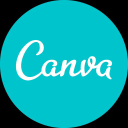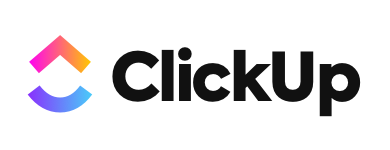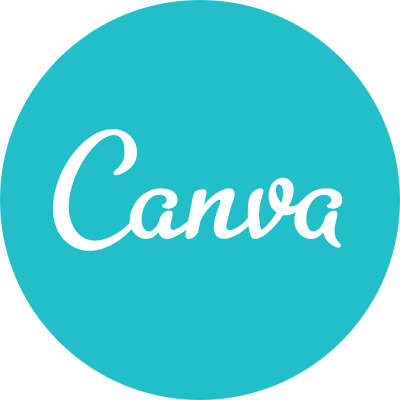How I Launched A Six Figure Online Membership That Helps Coaches & Service Providers Make Their First $10K Month
Hello! Who are you and what business did you start?
Hey, I’m Ellen Yin, founder/CEO of Ellen Yin Media and creator of Cubicle to CEO, our consumer brand consisting of our digital programs and a chart-topping podcast, the Cubicle to CEO Podcast, that has been downloaded in over 100 countries worldwide. To date, I have worked with over 7,500 customers through my online courses and marketing agency services, with clientele ranging from startups to Fortune 500 brands. My signature program is an online membership that helps coaches and service providers make their first $10K month - without a large audience or posting every day.

In the 3 years since I started my business, I’ve profitably bootstrapped our growth from an initial $300 client project into 7 figures in lifetime revenue (and on track to hit one million dollars in annual revenue in 2021); a milestone of only 2% of female founders achieve, and one that feels especially momentous to me as a first-generation Asian American.
What's your backstory and how did you come up with the idea?
My own journey from "Cubicle to CEO" began when I quit my corporate marketing job at the end of 2017 at age 23, without a backup plan. That’s where I got the inspiration for my brand name!
I was in a very fortunate financial position where I could afford to take a massive risk like that because I had six months of expenses saved in an emergency fund and I had graduated college-debt free after paying off $19,000 in student loans during my senior year of college while working 3 jobs and going to school.
I describe myself as an accidental entrepreneur because my intention was never to start my own business. when I left my corporate job Ironically, a coworker at the company I had just left became my first client when he reached out and asked if I could help launch and grow the Instagram channel for his local coffee stands. It was only a $300 project, but it gave me the proof of concept I needed to have the “aha” realization that I could monetize my existing skills into service and go find bigger client accounts, instead of continuing to apply for jobs.
I didn’t draft up a business plan or wait until I had all the steps figured out, I just leaned into this curiosity and ran with it. My focus was immediately on “let’s secure that next client account” and evolve the business naturally as we learn from experience. As a service-based solopreneur at the time, my business expenses and startup costs were extremely low, so there wasn’t anything holding me back from diving in headfirst.
By pre-selling my program to a few beta students before I created any content, I was able to test and validate my offer.
Take us through the process of designing, prototyping, and manufacturing your first product.
My professional career has always been in digital marketing, but the world of social media and online business is always evolving so I re-invested all of my profits early on into online programs, mentorship, books, events, etc. early on to continue upleveling my expertise. I don’t think I paid myself at all until a few months into my business. Education remains a priority in our budget to this day for me and my team. It’s a core value in our company that we are never done learning and improving.
If I’m being completely honest, I didn’t have a big drawn-out “design” process for defining my services or “launching” my business. In fact, I operated without a website, logo, or even business cards during my 12 months in business. I really believe clarity comes from action, so I try not to let over-planning get in the way of actually DOING. The more I talked to business owners struggling with their marketing, the better I understood their needs and what was renting space in their heads. I based my messaging off of aligning with them on those pain points in their own words, so they really felt like I understood their situation. People want to be listened to, not sold to. I built my marketing service around the outcomes that would add more time, energy, and money back into their businesses - when you can present a solution like that, it’s an easy sell.
Describe the process of launching the business.
Above was the story of how I launched my service-based business, but toward the end of 2019, our company made a sharp pivot away from client services to prioritize our focus on creating and scaling digital products. I knew I wanted to be able to impact more entrepreneurs with the marketing strategies and systems we had developed working with our agency clients by creating scalable, accessible self-guided, and “done with you” programs.
The first digital program we launched was Cubicle to CEO. I actually “launched” the program with zero content created - just a list of topics that were going to be covered over a 4 week period where I would teach the content live and essentially get “paid to create” my content. I offered an 80% discount to the first 10 founding members and sold out all at 12 spots total - all my leads came from Instagram stories and DMs.
By pre-selling my program to a few beta students before I created any content, I was able to test and validate my offer, get PAID to create the content in real-time with my founding students, and bootstrap my first year’s worth of course expenses with the beta cash injection. Now I teach other first time course creators how to use this same method in our live Paid To Create Challenge!
Since launch, what has worked to attract and retain customers?
We primarily enroll new members into Cubicle to CEO through an evergreen webinar funnel. I offer a free one-hour masterclass that helps potential members determine whether the system we teach inside our membership is a good fit for them or not, and then I invite them to enroll at the end of the class if it’s a good fit. There are three main strategies we’ve employed to attract new leads to our webinar funnel.
If you're talking to everyone, you're talking to no one. Your copy and online presence should speak to only ONE person, with ONE specific pain point, and ONE desired result.
Strategy #1: I was able to scale the membership to $10K MRR (monthly recurring revenue) in 90 days without any ad spend by leveraging partner campaigns. This is where we partner with someone who serves a similar audience to me but from a complementary angle.
They drive leads to us by inviting their community to sign up for my masterclass, and I teach it live to their audience and pay them a referral commission for any members who sign up. It’s a win for all parties: win for their audience who are given valuable free training regardless of whether they join our program or not, win for our affiliate partner for receiving positive feedback from their community and earning easy passive income, and win for us to consistently get in front of new warm audiences and borrow existing traffic sources at no upfront cost.
Strategy #2 : In March of 2020, we launched a self-liquidating offer (SLO) funnel with a suite of three affordable courses, all under $100. The front-end offer is only $27. The goal of this funnel was to profitably acquire new customers that we could then upsell into our membership. We started with only $30/day in ad spend and have continued to scale with ads. Our SLO funnel has allowed us to profitably acquire over 7,000 new customers in 11 months. Using this strategy, we’ve built a list of buyers, not just freebie seekers.
Strategy #3: Our other main traffic driver that brings us new leads is media features! In addition to hosting the Cubicle to CEO Podcast, I have also been featured on over 50 podcasts, stages (virtual and in-person), and publications.
How are you doing today and what does the future look like?
Since starting my business in 2018, we have doubled our annual revenue year over year - we recently crossed over 7 figures in lifetime revenue, and in 2021, we are on track to make a minimum of 1 million dollars in annual revenue!
As we scale, my goal is to maintain an average 30% profit margin and continue aggressively reinvesting profits back into the business.
Right now, we have a team of four full-time employees (including myself) on payroll and we consistently work with seven part-time contractors who are very much integrated with our internal team.
Build your owned assets - instead of obsessing over every new social media platform, its algorithms, and chasing vanity metrics like how many followers you have, focus on building your own database of contacts that you have full control over.
My long-term dream is to gradually shift into more of a media company that provides more equitable access to mentorship, social capital, community, and education for all female entrepreneurs - no matter their location or socioeconomic background.
As part of this goal, we recently introduced brand partnerships as a new revenue stream in our business and are actively focused on growing our podcast listenership and email list! We currently have a combined reach of 45,000 across our email list and social media communities.
Through starting the business, have you learned anything particularly helpful or advantageous?
I’ve learned a lot of important lessons, but the one I’d like to leave here is this: If you’re not embarrassed by your first attempt at something, you waited too long to start. Don’t let imposter syndrome and perfectionism hold you back from showing up. Treat every “failure” as an opportunity to collect valuable data that will help you make better decisions next time.
What platform/tools do you use for your business?
Kajabi is my favorite all-in-one platform where I host my website, membership site, blog, sales pages/funnels, checkout cart, webinar, and all digital courses.
Flodesk is my go-to email marketing service provider for gorgeous emails designed to convert.
Honeybook is my preferred CRM system for our clients.
We use Quickbooks for all invoicing and our books.
Metricool is my social media scheduler/analytics platform.
Airtable is where we store all our spreadsheets, forms, data, etc.
For team communication & project management, we rely on Slack, Voxer and ClickUp.
Canva and Adobe Spark are both amazing for creating graphics and visual assets!
What have been the most influential books, podcasts, or other resources?
That’s tough, I have too many recommendations to name here! Some of my recent favorite reads include Winging It by Emma Isaacs, Joy Inc. by Richard Sheridan, Procrastinate on Purpose by Rory Vaden, Clockwork by Mike Michalowicz and Beginner’s Pluck by Liz Bohannon.
For podcasts, lately, I’ve been loving the Screw The Nine To Five Podcast, Hey Haley Podcast, Business Unusual, The Influencer Podcast, and Goal Digger Podcast.
Advice for other entrepreneurs who want to get started or are just starting?
Number one tip when you're first starting a business: Invest in your network, mindset, and skill sets, in that order. Never stop growing and learning in those areas. PEOPLE and the strength of your relationships are the true assets in your business - not money, not tactical strategies, and certainly not vanity metrics like how many likes you get on social media.
Three other key tips:
#1 Skyrocket your conversions by getting crystal clear on your messaging - if you're talking to everyone, you're talking to no one. Your copy and online presence should speak to only ONE person, with ONE specific pain point, and ONE desired result. Your product/service is the solution for that one person, and that's what creates magnetic messaging.
#2 Build your owned assets - instead of obsessing over every new social media platform, its algorithms, and chasing vanity metrics like how many followers you have, focus on building your own database of contacts that you have full control over, like your email list (I love Flodesk) or texting list - I recommend an app called Norby!
#3 The fastest way to grow is by getting in front of existing traffic sources where your ideal customers/clients have already been conveniently congregated for you, especially when you're starting out and have a small audience or limited budget! I've done this through hashtag communities on Instagram and joint venture partnerships with peers in my industry who share the same target market as my business, but serve them from a complementary angle.
Where can we go to learn more?
- Website
- Free Masterclass: How To Make Your First $10K Month with a 1:1 Service Without a Large Following Or Posting Every Day
- Cubicle to CEO Podcast
- @missellenyin
- @cubicletoceo
- Facebook
If you have any questions or comments, drop a comment below!

Download the report and join our email newsletter packed with business ideas and money-making opportunities, backed by real-life case studies.

Download the report and join our email newsletter packed with business ideas and money-making opportunities, backed by real-life case studies.

Download the report and join our email newsletter packed with business ideas and money-making opportunities, backed by real-life case studies.

Download the report and join our email newsletter packed with business ideas and money-making opportunities, backed by real-life case studies.

Download the report and join our email newsletter packed with business ideas and money-making opportunities, backed by real-life case studies.

Download the report and join our email newsletter packed with business ideas and money-making opportunities, backed by real-life case studies.

Download the report and join our email newsletter packed with business ideas and money-making opportunities, backed by real-life case studies.

Download the report and join our email newsletter packed with business ideas and money-making opportunities, backed by real-life case studies.












